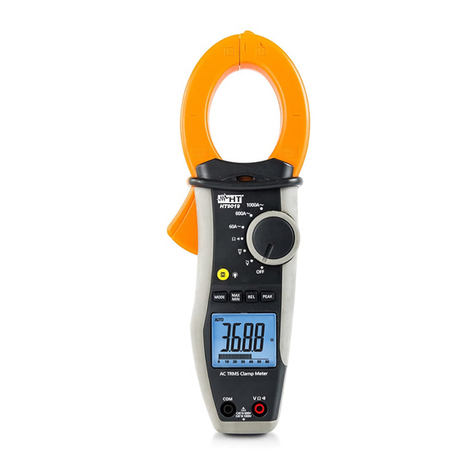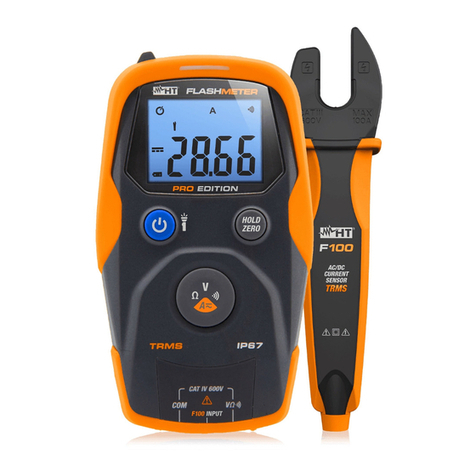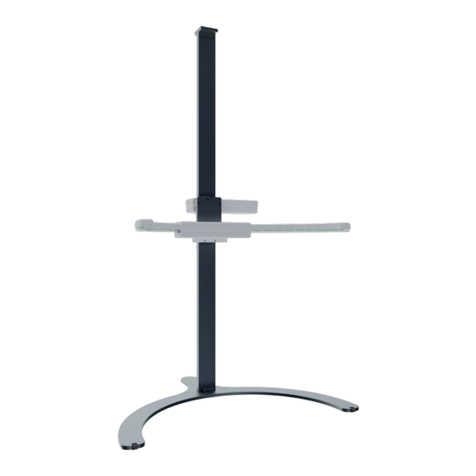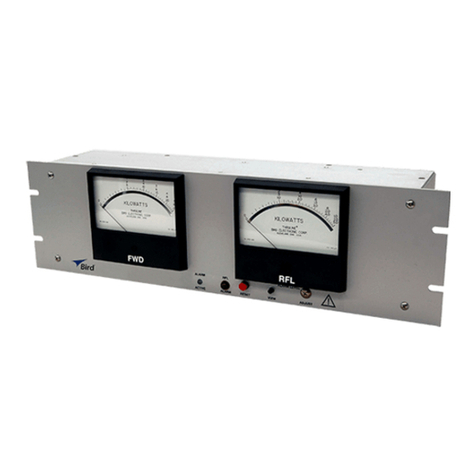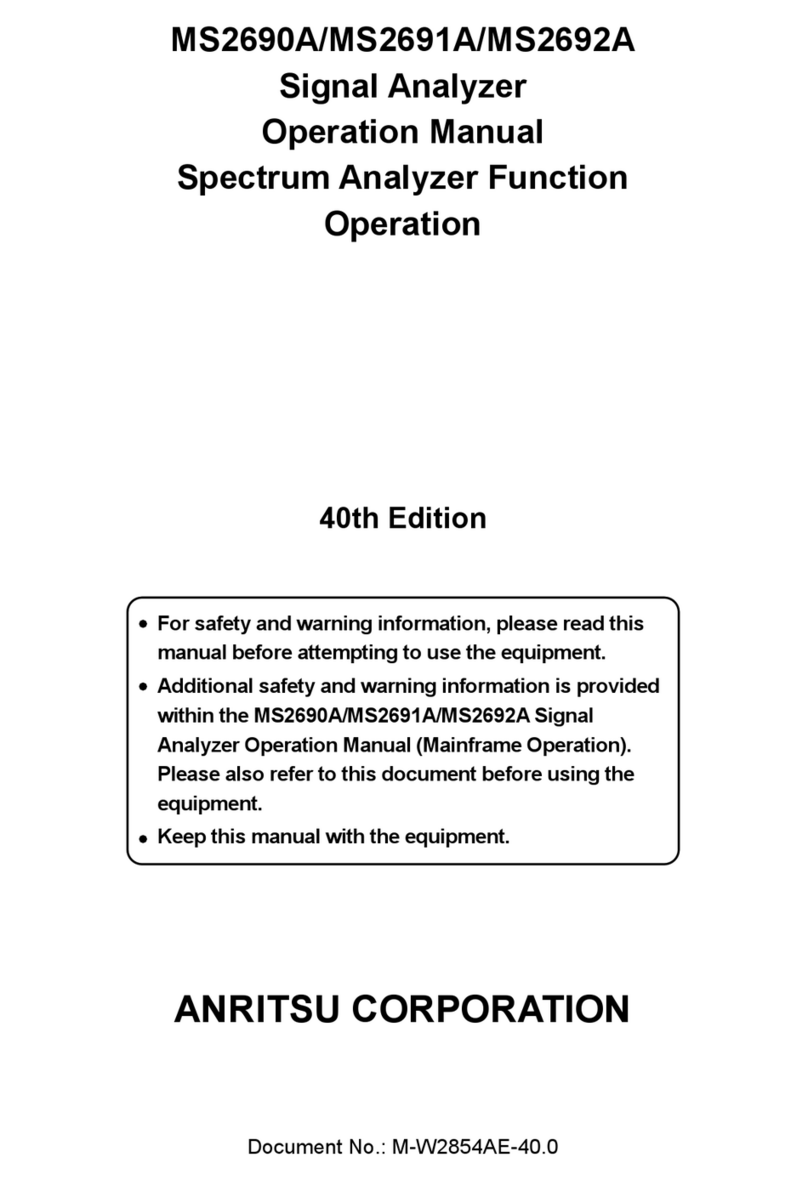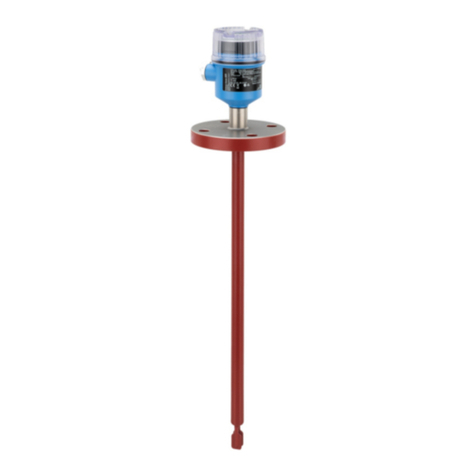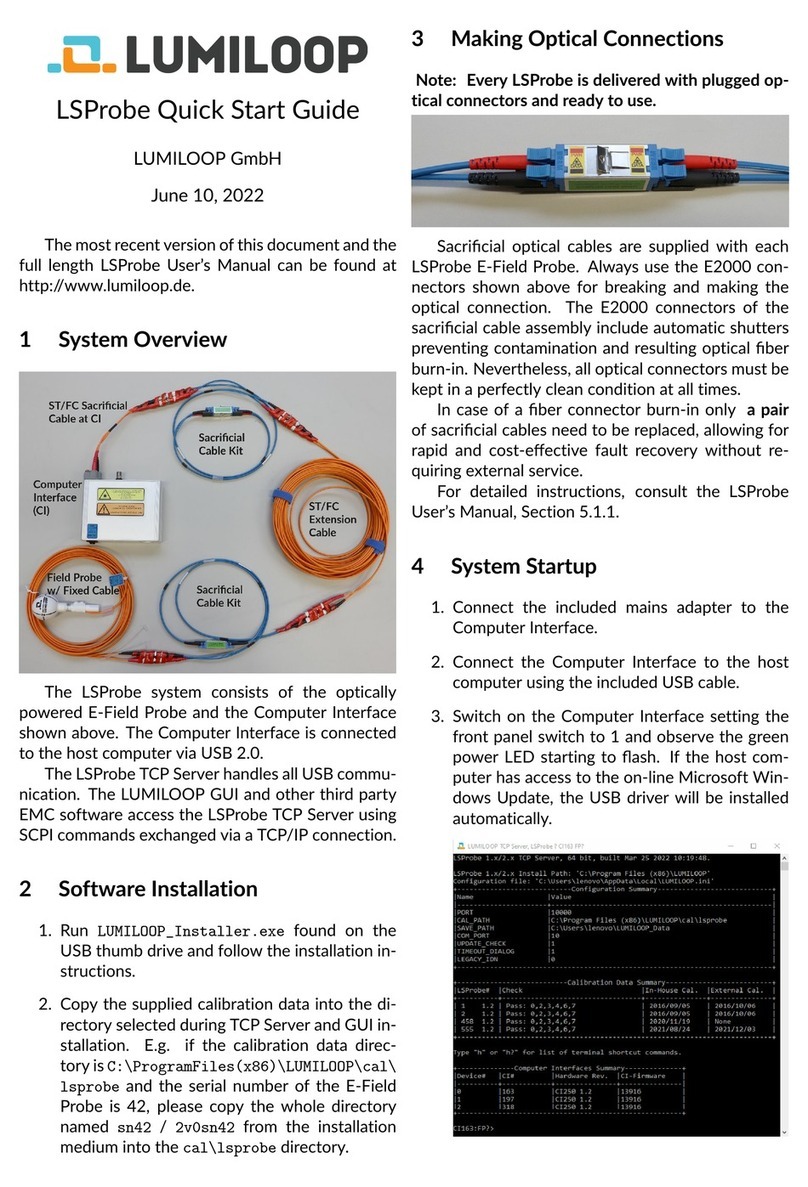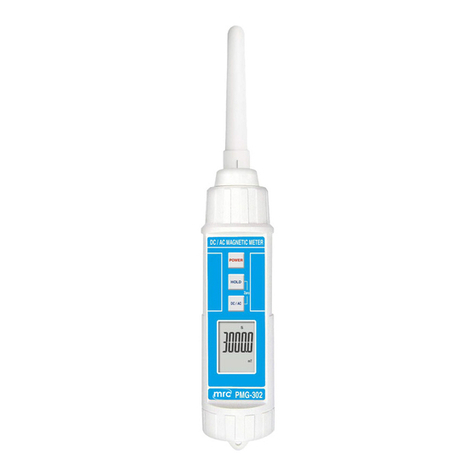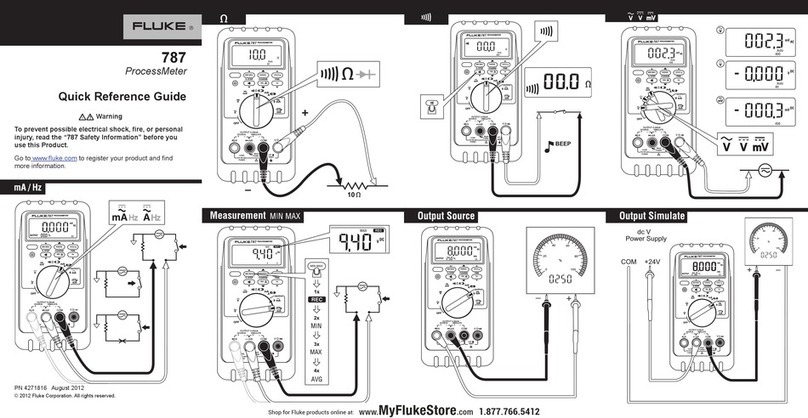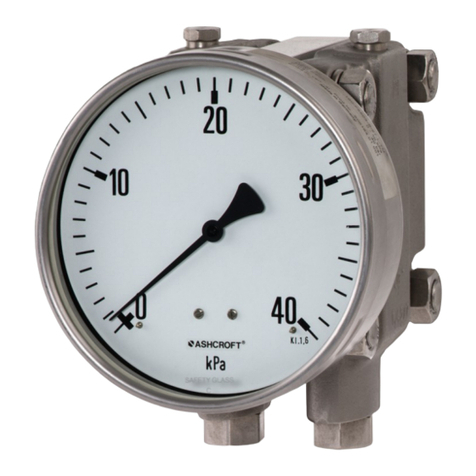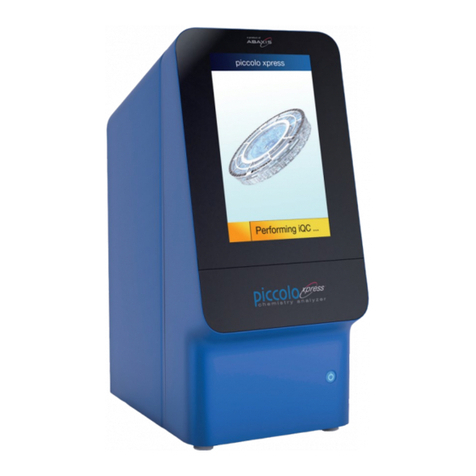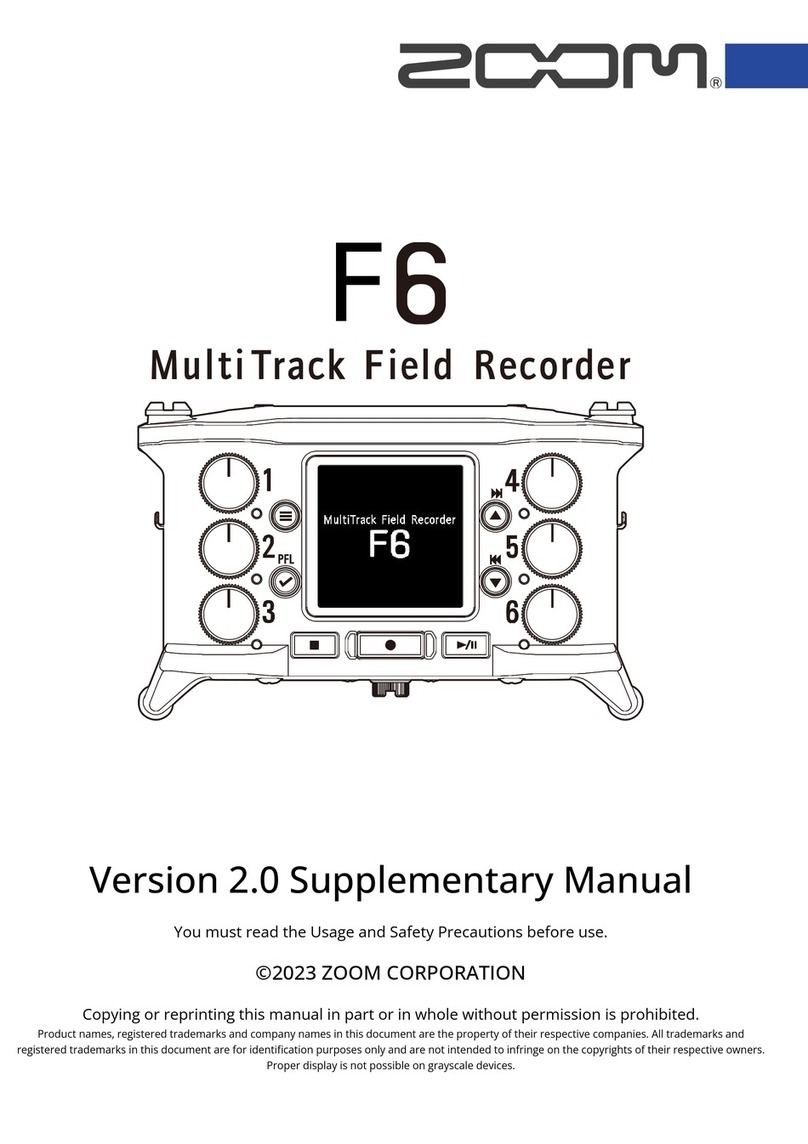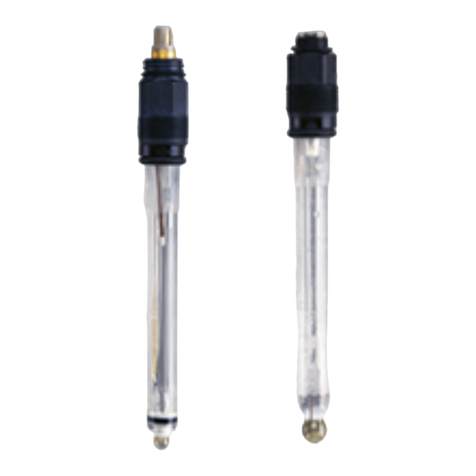HT Instruments HT4020 User manual

Copyright HT ITALIA 2013 Release EN 2.00 - 04/02/2013
ENGLISH
User manual
www. .com information@itm.com1.800.561.8187

HT4020 - HT4022
EN - 1
Table of Contents:
1.SAFETY PRECAUTIONS AND PROCEDURES.............................................................2
1.1.Preliminary instructions..................................................................................................... 2
1.2.During use......................................................................................................................... 3
1.3.After use............................................................................................................................ 3
1.4.Definition of measuring (overvoltage) category................................................................. 3
2.GENERAL DESCRIPTION..............................................................................................4
3.PREPARATION FOR USE..............................................................................................4
3.1.Preliminary checks............................................................................................................ 4
3.2.Power supply..................................................................................................................... 4
3.3.Calibration......................................................................................................................... 4
3.4.Storage.............................................................................................................................. 4
4.OPERATING INSTRUCTIONS........................................................................................5
4.1.Instrument description....................................................................................................... 5
4.1.1.Controls description..................................................................................................................... 5
4.1.2.Alignment marks.......................................................................................................................... 5
4.1.3.Rubber cap use to hold test leads............................................................................................... 6
4.1.4.Disable Auto Power OFF function ............................................................................................... 6
4.2.Description of function keys .............................................................................................. 7
4.2.1.D-H/ key.................................................................................................................................. 7
4.2.2.FUNC and FUNC/HARM key............................................................................................ 7
4.2.3.MAX/MIN/PK and MAX/MIN/PK/Hkey...................................................................................... 7
4.2.4.ENERGY and ENERGY/Hkey.................................................................................................. 7
4.3.Operating instructions ....................................................................................................... 8
4.3.1.AC/DC Voltage measurement ..................................................................................................... 8
4.3.2.AC Voltage frequency measurement........................................................................................... 9
4.3.3.Measurement of Voltage Harmonics (HT4022)......................................................................... 10
4.3.4.Resistance and continuity test................................................................................................... 11
4.3.5.AC Current measurement.......................................................................................................... 12
4.3.6.AC Frequency current measurement......................................................................................... 13
4.3.7.Measurement of Current Harmonics (HT4022) ......................................................................... 14
4.3.8.Power/Energy measurement on single phase system .............................................................. 15
4.3.9.Power/Energy measurement on three phase balanced system................................................ 16
4.3.10.Detection of phase sequence indication with 1 wire method..................................................... 17
4.3.10.1.Detection of phase coincidence with 1 wire method................................................................ 19
4.3.10.2.Phase detection with 1 wire method ........................................................................................21
5.MAINTENANCE ............................................................................................................22
5.1.General information......................................................................................................... 22
5.2.Battery replacement........................................................................................................ 22
5.3.Cleaning.......................................................................................................................... 22
5.4.End of life ........................................................................................................................ 22
6.TECHNICAL SPECIFICATIONS ...................................................................................23
6.1.Technical characteristics................................................................................................. 23
6.1.1.Reference standards.................................................................................................................. 24
6.2.General specifications..................................................................................................... 24
6.3.Environmental conditions................................................................................................ 24
6.3.1.Climatic conditions..................................................................................................................... 24
6.4.Accessories..................................................................................................................... 24
6.4.1.Standard accessories ................................................................................................................ 24
7.SERVICE.......................................................................................................................25
7.1.Warranty conditions......................................................................................................... 25
7.2.After-sale service............................................................................................................. 25
8.APPENDIX: VOLTAGE AND CURRENT HARMONICS................................................26
8.1.Theory............................................................................................................................. 26
8.2.Limit values for harmonics............................................................................................... 27
8.3.Causes for the presence of harmonics............................................................................ 27
8.4.Consequences of the presence of harmonics................................................................. 28
www. .com information@itm.com1.800.561.8187

HT4020 - HT4022
EN - 2
1. SAFETY PRECAUTIONS AND PROCEDURES
This instrument has been designed in compliance with IE/EN61010-1 directive. For your
own safety and to avoid damaging the instrument we suggest you follow the procedures
hereby prescribed and to read carefully all the notes preceded by the symbol .
CAUTION
Should you fail to keep to the prescribed instructions you could damage the
instrument and/or its components or endanger your safety.
Take extreme care of the following conditions while taking measurements:
Do not measure voltage or current in humid or wet environments.
Do not use the clamp in the presence of explosive gas (material), combustible gas
(material), steam or dust.
Do not touch the circuit under test if no measurement is being taken;
Do not touch exposed metal parts, unused terminals, circuits and so on;
Do not use the instrument if it seems to be malfunctioning (i.e. if you notice
deformations, breaks, leakage of substances, absence of segments on the display and
so on);
Be careful when you measure voltages exceeding 20V as you may risk electrical
shocks.
Take care not to allow your hand to pass over the safety guard (see Fig. 1, pos.2) on
current measurements and voltage measurements using the holster.
The following symbols are used:
Caution: refer to the instruction manual. An incorrect use may damage the tester
or its components
High voltage danger: risk of electric shocks
Double insulated meter
AC voltage or current
DC voltage or current
1.1. PRELIMINARY INSTRUCTIONS
This instrument has been designed for use in environments of pollution degree 2
It can be used for CURRENT measurements on installations of measurement CAT III
600V (voltage between phase and to ground) and for VOLTAGE and FREQUENCY
measurements on installations of CAT III 600V (voltage between terminals and
between phase and to ground)
Please use the standard safety precautions aimed at protecting you against dangerous
electric currents and protecting the instrument against incorrect operations
Only the leads supplied with the instrument guarantee compliance with the safety
standards. They must be in good condition and, if necessary, be replaced with identical
Do not test circuits exceeding the current and voltage limits.
Do not perform any test under conditions exceeding the limits indicated in § 6.2.1
Assure the batteries are installed correctly
Before connecting the test leads to the circuit to be tested, make sure that the rotary
selector switch is set to the correct function.
Make sure that the LCD and rotary selector switch indicate the same function.
www. .com information@itm.com1.800.561.8187

HT4020 - HT4022
EN - 3
1.2. DURING USE
CAUTION
Non compliance with CAUTIONs and/or instructions may cause damage to
the tester or its components or injure the operator.
Remove the clamp jaw from the conductor or circuit under test before changing the
range.
When the tester is connected to the measuring circuits, do not touch any unused
terminal.
Do not measure resistance in the presence of external voltages. Even if the circuit is
protected, excessive voltage could cause the instrument to malfunction.
When measuring current with the clamp jaws, first remove the test leads from the
instrument’s input jacks.
When measuring current, any other source near the clamp jaw could affect its
accuracy.
When measuring current, always put the conductor to be tested in the middle of the
clamp jaw to obtain the most accurate reading as referred into § 4.1.2.
While measuring, if the value remains unchanged check if the HOLD function is
enabled (Hsymbol at display)
1.3. AFTER USE
After taking measurements turn off the clamp
If the instrument is not be used for a long period, remove the battery
1.4. DEFINITION OF MEASURING (OVERVOLTAGE) CATEGORY
The norm IEC/EN61010-1: Safety requirements for electrical equipment for measurement,
control and laboratory use, Part 1: General requirements, defines what a measuring
category, usually called overvoltage category, is.
Circuits are divided into the following measurement categories:
Measurement category IV is for measurements performed at the source of the low-
voltage installation
Examples are electricity meters and measurements on primary overcurrent protection
devices and ripple control units
Measurement category III is for measurements performed in the building installation
Examples are measurements on distribution boards, circuit breakers, wiring, including
cables, bus-bars, junction boxes, switches, socket-outlets in the fixed installation, and
equipment for industrial use and some other equipment, for example, stationary motors
with permanent connection to fixed installation
Measurement category II is for measurements performed on circuits directly
connected to the low voltage installation
Examples are measurements on household appliances, portable tools and similar
equipment
Measurement category I is for measurements performed on circuits not directly
connected to MAINS
Examples are measurements on circuits not derived from MAINS, and specially
protected (internal) MAINS-derived circuits. In the latter case, transient stresses are
variable; for that reason, the norm requires that the transient withstand capability of the
equipment is made known to the user.
www. .com information@itm.com1.800.561.8187

HT4020 - HT4022
EN - 4
2. GENERAL DESCRIPTION
Those instruments HT4020 and HT4022 can perform the herewith measurements:
AC TRMS voltage
DC voltage
AC TRMS current
Harmonic AC voltage (from DC to 25th components) and THD% (HT4022)
Harmonic AC current (from 1st to 25th components) and THD% (HT4022)
Voltage frequency with input test leads
Current frequency with clamp jaws
Resistance and continuity test
Phase rotation and coincidence test with 1 test lead
Active, reactive, apparent power on single-phase and balanced three phase systems
Power factor measure on single-phase and balanced three phase systems
Active, reactive, apparent energy on single-phase and balanced three phase systems
Each parameter can be selected using the 7-position rotary switch, including an OFF
position. There are also the following buttons: " FUNC ", “MAX/MIN/PK”, “ENERGY”
and “D-H / ” (HT4020) or " FUNC / HARM", “MAX/MIN/PK / H”, “ENERGY / H” and
“D-H / ” (HT4022). For their use please see § 4.2. The selected quantity appears on a
high-contrast display with unit and function indication.
3. PREPARATION FOR USE
3.1. PRELIMINARY CHECKS
This instrument has been checked mechanically and electrically before shipment. All
precautions have been taken to assure that the instrument reaches you in perfect
condition.
However, it is advisable to carry out a rapid check in order to detect any possible damage,
which might have occurred in transit.
Check the accessories contained in the packaging to make sure they are the same as
reported in § 6.3.1.
3.2. POWER SUPPLY
The instrument is supplied with 2x1.5V AAA batteries. The instruments battery life is about
90 hours. The " " symbol appears when the batteries are nearly discharged. Replace
them following the instructions in § 5.2.
3.3. CALIBRATION
The tester complies with the accuracy specifications listed in this manual and such
compliance is guaranteed for one year, afterwards the tester may need recalibration.
3.4. STORAGE
In order to guarantee the accuracy of the measurements, after a period of storage in
extreme environmental conditions wait for the tester to stabilize to within the specified
operating conditions (see § 6.2.1) before use.
www. .com information@itm.com1.800.561.8187

HT4020 - HT4022
EN - 5
4. OPERATING INSTRUCTIONS
4.1. INSTRUMENT DESCRIPTION
4.1.1. Controls description
CAPTION:
1. Inductive clamp jaw
2. Safety guard
3. D-H,key
4. Jaw trigger
5. Rotary selector switch.
6. ENERGY key (HT4020)
ENERGY/Hkey (HT4022)
7. FUNC key (HT4020)
FUNC / HARM key (HT4022)
8. MAX/MIN/PK key (HT4020)
MAX/MIN/PK/Hkey (HT4022)
9. LCD display
10.COM jack
11.V/jack
Fig. 1: Instrument description
4.1.2. Alignment marks
Put the conductor within the jaws on intersection of the indicated marks as close as
possible (see Fig. 2) in order to meet the meter accuracy specifications.
CAPTION:
1. Alignment marks.
2. Conductor.
Fig. 2: Alignment marks.
www. .com information@itm.com1.800.561.8187

HT4020 - HT4022
EN - 6
4.1.3. Rubber cap use to hold test leads
A rubber holster is provided with the instrument. This standard accessory, when fitted on
the top of the clamp, can hold one of the two test leads, as shown in Fig. 3.
Fig. 3: Use of rubber test lead holster
This rubber holster has a very practical use. It allows the user to perform the
measurements with both test leads while, more easily, observing the value on the display
at the same time.
4.1.4. Disable Auto Power OFF function
In order to extend the battery life, the instrument switches off 5 minutes after the last rotary
switch or button actuation. When this function is enabled the symbol is displayed.
To disable this function perform the herewith procedure:
1. Switch OFF the instrument
2. While FUNC key is pressed switch on the instrument rotate the selector to any
position
Rotating the selector switch to the OFF position then back to any function again will re-
enable the Auto Power OFF function.
www. .com information@itm.com1.800.561.8187

HT4020 - HT4022
EN - 7
4.2. DESCRIPTION OF FUNCTION KEYS
4.2.1. D-H/ key
This key enables the HOLD function. The symbol "H" is displayed when this function is
enabled. To disable this function press the D-H key again or rotate the selector switch to
another position.
Press and hold the D-H/ key for 1 second to enable the backlight. The backlight
automatically turns off about 5 seconds after the last rotary selector switch or button
actuation.
4.2.2. FUNC and FUNC/HARM key
This key allows the user to cycle through each function’s measurement modes with each
key press.
V: press FUNC key to select between voltage and frequency measurement.
Press and hold the FUNC/HARM key (HT4022) for at least 1 second to
activate the voltage harmonic measurement. By pressing the Hand Hkeys
the individual harmonic values are displayed. This function mode is disabled by
pressing and holding the FUNC/HARM key for at least 1 second or rotating
the selector to any other position
: press FUNC key to select between current and frequency measurement.
Press and hold the FUNC/HARM key (HT4022) for at least 1 second to
activate the current harmonic measurement. By pressing the Hand Hkeys
the individual harmonic values are displayed. This function mode is disabled by
pressing and holding the FUNC/HARM key for at least 1 second or rotating
the selector to any other position
: press FUNC key to start phase sequence detection.
W: press FUNC key to select between active energy, reactive energy, apparent
energy, and power factor measurements on single-phase systems.
W3: press FUNC key to select between active energy, reactive energy, apparent
energy, and power factor measurements on three phase balanced systems.
4.2.3. MAX/MIN/PK and MAX/MIN/PK/Hkey
By pressing and holding the MAX/MIN/PK key for at least 1 second, the instrument
activates the maximum (MAX), minimum (MIN), average (AVG) and peak (PK)
measurement modes. All of these values are continually updated even if only one of them
is displayed. By repeatedly pressing the MAX/MIN/PK key each value is displayed with the
corresponding frequency. To disable this function press and hold the MAX/MIN/PK key for
at least 1 second or rotate the selector to any position. In HARM measurement (HT4022)
the pressure of MAX/MIN/PK/Hkey allows to decrease the order of AC voltage or current
harmonic (see § 4.3.3 and § 4.3.7)
4.2.4. ENERGY and ENERGY/Hkey
With the rotary selector on “W" or "W3" position, press and hold this key at least 1
second to activate the energy measurement (see § 4.3.8 and § 4.3.9). The pressure of
ENERGY/Hkey allows to increase the order of AC voltage or current harmonic (see §
4.3.3 and § 4.3.7). Push ENERGY key and keep it pressed at least 1 second to escape
from the energy measurement mode
www. .com information@itm.com1.800.561.8187

HT4020 - HT4022
EN - 8
4.3. OPERATING INSTRUCTIONS
4.3.1. AC/DC Voltage measurement
CAUTION
The maximum voltage input is 600V. Do not attempt to take any voltage
measurements exceeding the limits indicated in this manual. Exceeding
the limits could cause electrical shock or damage to the instrument.
The instrument won’t measure any AC value less than 1.5V.
Fig. 4: Use of instrument for DC/AC voltage measurement
1. Select the “V” position.
2. Insert the red lead into V/jack and the black lead into the COM jack. For ease of use,
attach the rubber holster and insert a test lead (see Fig. 3).
3. Connect the test leads to the circuit under test (see Fig. 4). The instrument
automatically selects “AC” or “DC”. For AC voltage measurements the frequency value
is shown on the secondary display.
4. The “-“ symbol indicates a negative DC voltage polarity.
5. The "O.L" symbol indicates a voltage higher than the full-scale capability of the
instrument
6. For HOLD and MAX/MIN/AVG/PK features refer to § 4.2.1 and § 4.2.3)
www. .com information@itm.com1.800.561.8187

HT4020 - HT4022
EN - 9
4.3.2. AC Voltage frequency measurement
CAUTION
The maximum voltage input is 600V. Do not attempt to take any voltage
measurements exceeding the limits indicated in this manual. Exceeding
the limits could cause electrical shock or damage to the instrument.
The instrument won’t measure any AC value less than 1.5V.
Fig. 5: Use of instrument for AC voltage frequency measurement
1. Select the “V” position
2. Press the FUNC key to select the Hz function
3. Insert the red plug into V/jack and the black plug into the COM jack. For ease of use,
attach the rubber holster and insert a test lead (see Fig. 3)
4. Connect the test leads to the circuit under test (see Fig. 5). The measured frequency of
AC voltage value is displayed
5. The "O.L" symbol indicates a frequency higher than the full-scale capability of the
instrument
6. For HOLD and MAX/MIN/AVG features refer to § 4.2.1 and § 4.2.3
7. Press the FUNC key again to return to the voltage measurement function
www. .com information@itm.com1.800.561.8187

HT4020 - HT4022
EN - 10
4.3.3. Measurement of Voltage Harmonics (HT4022)
CAUTION
The maximum Voltage input is 600V. Do not attempt to take any voltage
measurements exceeding the limits indicated in this manual. Exceeding
the limits could cause electrical shock or damage to the instrument.
Harmonic voltage measure is active for AC voltage on inputs only.
Fig. 6: Use of instrument for AC voltage harmonic measurement
1. Select the “V” position
2. Press FUNC/HARM key and keep it pressed at least 1 second until symbol “THD%”
is displayed
3. Insert the red plug into V/jack and the black plug COM into jack. For ease of use,
attach the rubber test lead holster and insert a test lead (see Fig. 3)
4. Connect the test leads to the circuit under test (see Fig. 6). The instrument displays the
Total Harmonic Distortion value of the input signal. The symbol “THD%” is shown on
the display. See § 8 for the parameter’s definition
5. With the Hand Hkeys you can cycle through all available harmonic values from DC
to the 25th order. On the secondary display is shown the order of the harmonic whose
percentage value is displayed on the main one (ex. h3% means third harmonic)
6. Press the FUNC key to switch to the absolute harmonics’ values displaying (from
DC to 25th order). On the secondary display is shown the order of the harmonic whose
absolute value is displayed on the main one (ex. h3 means third harmonic)
7. Press FUNC key to escape this mode going back to voltage measurement function
(see § 4.3.1)
www. .com information@itm.com1.800.561.8187

HT4020 - HT4022
EN - 11
4.3.4. Resistance and continuity test
CAUTION
Before attempting any resistance measurement remove the power from the
circuit under test and discharge all the capacitors, if present.
Fig. 7: Use of instrument for resistance and continuity test
1. Select the “” position.
2. Insert the red plug into V/jack and the black plug into COM one. For an easy
measurement use the rubber test lead holster inserting in it one test lead (see Fig. 3).
3. Connect the test leads to the circuit under test (see Fig. 7). The measured resistance
value is displayed.
4. The continuity test is always enabled. An audible beep sounds when the measured
value is <40
5. The symbol "O.L" means that the measured voltage is higher than the full scale of the
instrument
6. For HOLD and MAX/MIN/AVG features refer to § 4.2.1 and § 4.2.3
www. .com information@itm.com1.800.561.8187

HT4020 - HT4022
EN - 12
4.3.5. AC Current measurement
CAUTION
Before attempting any measurement disconnect all the test leads from the
circuit under test and from the meter's input terminals.
Fig. 8: Use of instrument for AC current measurements
1. Select the “ ”position
2. Open the jaws and clamp only one cable. Pay attention to the alignment marks (see §
4.1.2. and Fig. 8). The values of current and frequency are shown on the main and
secondary displays.
3. The symbol "O.L" means that the measured voltage is higher than the full scale of the
instrument
4. For HOLD and MAX/MIN/AVG/PK features refer to § 4.2.1 and § 4.2.3
www. .com information@itm.com1.800.561.8187

HT4020 - HT4022
EN - 13
4.3.6. AC Frequency current measurement
CAUTION
Before attempting any measurement disconnect all the test leads from the
circuit under test and from the meter's input terminals.
Fig. 9: Use of instrument for AC current frequency measurement
1. Select the “ ”position
2. Press FUNC key to select Hz function
3. Open the jaws and clamp only one cable. Pay attention to the alignment marks (see §
4.1.2. and Fig. 9). The value of frequency is shown on display
4. The symbol "O.L" means that the measured voltage is higher than the full scale of the
instrument. The symbol “LO” is shown in case of wrong connection of the instrument
(see Fig. 9) or for measured values lower that the minimum range
5. For HOLD and MAX/MIN/AVG features refer to § 4.2.1 and § 4.2.3
6. Press FUNC key to escape this mode going back to current measurement function
(see § 4.3.5).
www. .com information@itm.com1.800.561.8187

HT4020 - HT4022
EN - 14
4.3.7. Measurement of Current Harmonics (HT4022)
CAUTION
Before attempting any measurement disconnect all the test leads from the
circuit under test and from the meter's input terminals.
Fig. 10: Use of instrument for AC harmonic current measurement
1. Select the “ ”position
2. Press the FUNC/HARM key and keep it pressed at least 1 second until symbol
“THD%” is displayed
3. Open the jaws and clamp only one cable. Pay attention to the alignment marks (see §
4.1.2. and Fig. 10). The instrument displays the Total Harmonic Distortion value of the
input signal. The symbol “THD%” is displayed. See § 8 for the parameter’s definition.
4. With the Hand Hkeys you can cycle through all available harmonic values from the
1st to the 25th order. On the secondary display is shown the order of the harmonic
whose percentage value is displayed on the main one (ex. h3% means third harmonic).
5. Press the FUNC/HARM key to switch to the absolute harmonics’ values displaying
(from 1st to 25th order). The secondary display indicates the order of the harmonic
whose absolute value is displayed on the main one (ex. h3 means third harmonic)
6. Press FUNC/HARM key to escape this mode going back to current measurement
function (see § 4.3.5)
www. .com information@itm.com1.800.561.8187

HT4020 - HT4022
EN - 15
4.3.8. Power/Energy measurement on single phase system
CAUTION
The maximum Voltage input is 600V. Do not attempt to take any voltage
measurements exceeding the limits indicated in this manual. Exceeding the
limits could cause electrical shock or damage to the instrument.
Fig. 11: Use of instrument for power/energy measurement on single phase system
1. Select the “W” position
2. Open the jaws and clamp only one cable. Pay attention to the alignment marks (see §
4.1.2. and Fig. 11)
3. Insert the red plug into V/jack and the black plug into COM one
4. Connect the test leads to the circuit under test (see Fig. 11). The measured active
power value is displayed
5. If the symbol " " is displayed the input voltage and/or current value is higher than the
instrument’s full scale. Therefore the power and power factor values could be incorrect
6. By pressing the FUNC key the parameters active power (kW), reactive power (kVAR,
capacitive C, inductive I), apparent power (kVA), power factor (Pfi or Pfc for inductive
and capacitive respectively) are displayed
7. Press and hold the ENERGY key for at least 1 second to active the energy
measurement mode. By pressing the FUNC key the parameters active energy
(kWh), reactive energy (kVARh, capacitive C, inductive I), apparent energy (kVAh),
TIME with indication of energy measurement duration are displayed
8. Press the ENERGY key to activate the energy measurement. The message
“MEASURING” appears at the bottom of the display. Press the ENERGY key again to
stop the energy measurement, the message “MEASURING“ disappears from the
display
9. For HOLD and MAX/MIN/AVG features refer to § 4.2.1 and § 4.2.3
10.Press ENERGY key for at least 1 second to escape this mode going back to power
measurement function
www. .com information@itm.com1.800.561.8187

HT4020 - HT4022
EN - 16
4.3.9. Power/Energy measurement on three phase balanced system
CAUTION
The maximum input for Voltage measurements is 600V. Do not attempt to
take any voltage measurement exceeding the limits indicated in this manual.
Exceeding the limits could cause electrical shock at the operator and
damages to the clamp meter.
Fig. 12: Use of instrument for power/energy measure on three phase balanced system
1. Select the “W3” position
2. Open the jaws and clamp the L3 phase cable. Pay attention to the alignment marks
(see § 4.1.2. and Fig. 12)
3. Insert the red plug into V/jack and the black plug into COM one
4. Connect the red test lead to L1 phase conductor and the black test lead to L2 phase
conductor (see Fig. 12). The measured active power value is displayed
5. If the symbol " " is displayed the input voltage and/or current value is higher than the
instrument’s full scale. Therefore the power and power factor values could be incorrect
6. By pressing the FUNC key the parameters active power (kW), reactive power (kVAR,
capacitive C, inductive I), apparent power (kVA), power factor (Pfi or Pfc for inductive
and capacitive respectively) are displayed
7. Press and hold the ENERGY key for at least 1 second to active the energy
measurement mode. By pressing the FUNC key the parameters active energy
(kWh), reactive energy (kVARh, capacitive C, inductive I), apparent energy (kVAh),
TIME with indication of energy measurement duration are displayed
8. Press the ENERGY key to activate the energy measurement. The message
“MEASURING” appears at the bottom of the display. Press the ENERGY key again to
stop the energy measurement, the message “MEASURING“ disappears from the
display
9. For HOLD and MAX/MIN/AVG features refer to § 4.2.1 and § 4.2.3
10.Press ENERGY key for at least 1 second to escape this mode going back to power
measurement function www. .com information@itm.com1.800.561.8187

HT4020 - HT4022
EN - 17
4.3.10. Detection of phase sequence indication with 1 wire method
CAUTION
The maximum Voltage input is 600V. Do not attempt to take any voltage
measurements exceeding the limits indicated in this manual. Exceeding
the limits could cause electrical shock or damage to the instrument
During this measurement the instrument must be always held in the
operator’s hand and the test lead cable must not be in contact with or near
to any voltage source that, due to instrument sensitivity, can abort the
measurement
Fig. 13: Use of instrument for phase sequence indication with 1 wire
1. Select the “ ” position. The symbol “1PH” will appear on the secondary display
2. Insert the red lead into V/jack
3. Connect the red terminal to the L1 phase conductor (see Fig. 13 – left part). If
necessary use the rubber test lead holster and insert the red test lead
4. When an input voltage >80V is detected the buzzer sounds and the symbol “PH” is
shown on the main display. Don’t press any key and keep the test lead connected to L1
phase cable.
CAUTION
If the input voltage value is < 80V the instrument doesn’t show “PH” symbol
and it’s not possible to execute the phase rotation detection
5. After about one second “MEASURING“ appears on the display indicating that the
instrument is ready to execute the first measurement (see Fig. 13 – left part)
www. .com information@itm.com1.800.561.8187

HT4020 - HT4022
EN - 18
6. Press the FUNC key, the “MEASURING” message will disappear.
7. Disconnect the test lead and the symbol “2PH” appears on the secondary display
8. Connect the test lead to the L2 phase conductor (see Fig. 13 – right part)
9. When an input voltage >80V is detected the buzzer sounds and the symbol “PH” is
shown on the main display. Don’t press any key and keep the test lead connected to L2
phase cable.
CAUTION
If the input voltage value is < 80V the instrument doesn’t show “PH” symbol
and it’s not possible to execute the phase rotation detection
10.After about one second “MEASURING“ appears on the display indicating that the
instrument is ready to execute the second measurement.
11.Press the FUNC key, the “MEASURING” message will disappear.
CAUTION
If you Wait more than 10 seconds between the first FUNC key press and
the second, the instrument will display the “SEC” message and it’s
necessary to repeat all the measurements from the beginning. Rotate the
selector to any position to escape the function and restart at step 1.
12.If the two tested phases follow the correct sequence, the instrument displays “1.2.3.”,
otherwise it displays “2.1.3.” indicating an incorrect phase sequence.
CAUTION
The detected voltage is NOT the phase to neutral voltage, but the
voltage between the conductor and the operator who is holding the
instrument. This value can be lower than the phase to neutral voltage.
DON’T TOUCH THE PHASE CABLE IF YOU AREN’T SURE THAT
ANY VOLTAGE IS PRESENT
If the operator is insulated from the ground (e.g. insulated floors, shoes
with thick rubber, etc.) the instrument may not measure correctly. We
recommend repeating test at least twice due to verify the rightness of the
obtained result
www. .com information@itm.com1.800.561.8187

HT4020 - HT4022
EN - 19
4.3.10.1. Detection of phase coincidence with 1 wire method
CAUTION
The purpose of this measurement is to verify the correct phase between 2
conductors before executing a parallel connection
The maximum Voltage input is 600V. Do not attempt to take any voltage
measurements exceeding the limits indicated in this manual. Exceeding
the limits could cause electrical shock or damage to the instrument
During this measurement the instrument must be always held in the
operator’s hand and the test lead cable must not be in contact with or near
to any voltage source that, due to instrument sensitivity, can abort the
measurement
Fig. 14: Use of instrument for phase coincidence indication with 1 wire
1. Select the “ ” position. The symbol “1PH” is shown on the secondary display
2. Insert the red plug into V/jack
3. Connect the red terminal to the L1 phase conductor of the first 3-phase system (see
Fig. 14 – left part). If necessary use the rubber cup to insert red test lead
4. When an input voltage >80V is detected the buzzer sounds and the symbol “PH” is
shown on the main display. Don’t press any key and keep the test lead connected to L1
phase cable
CAUTION
If the input voltage value is < 80V the instrument doesn’t show “PH” symbol
and it’s not possible to execute the phase rotation detection.
5. After about one second “MEASURING“ appears on the display indicating that the
instrument is ready to execute the first measurement (see Fig. 14 – left part)
www. .com information@itm.com1.800.561.8187
This manual suits for next models
1
Table of contents
Other HT Instruments Measuring Instrument manuals
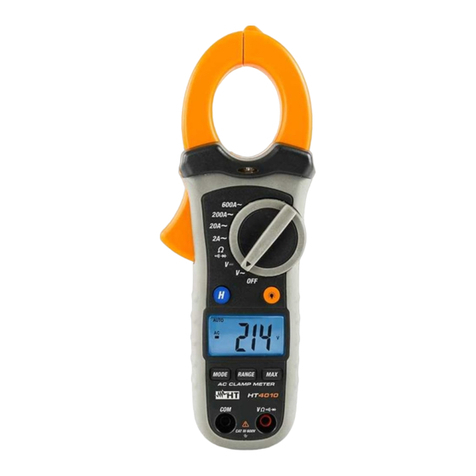
HT Instruments
HT Instruments HT4010 User manual
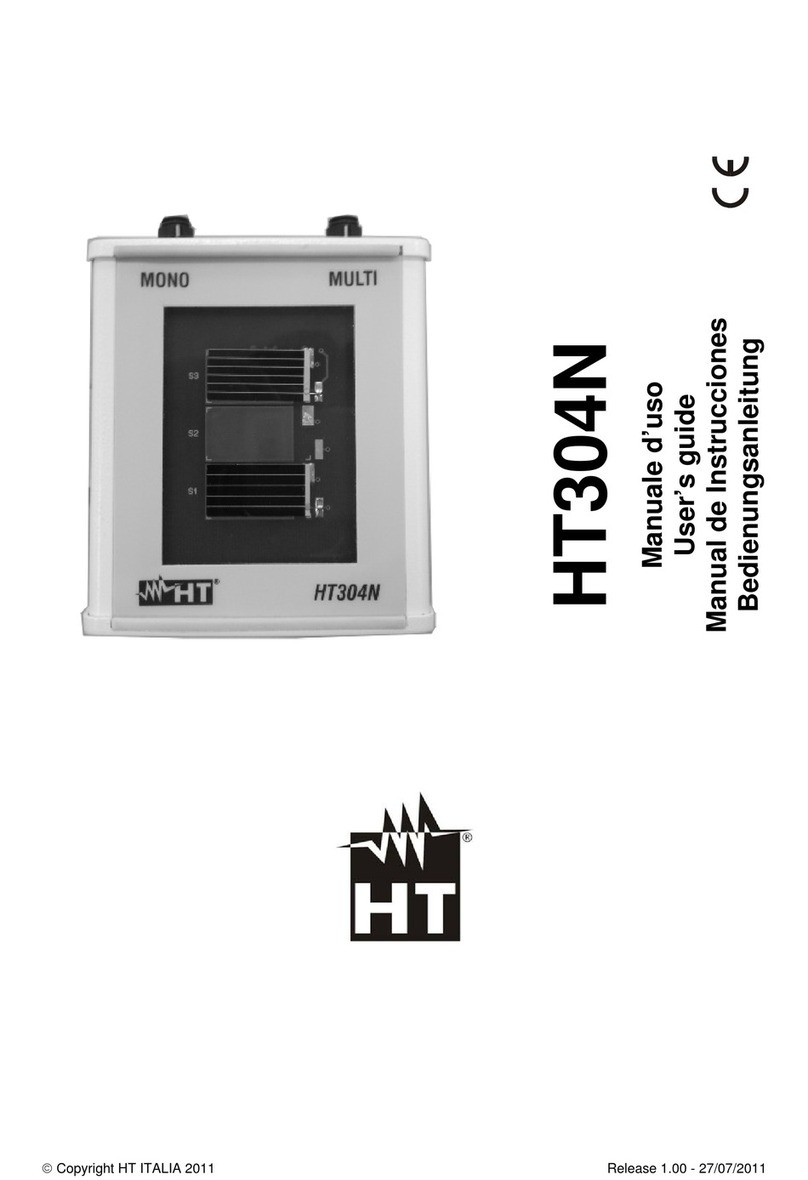
HT Instruments
HT Instruments HT304N User manual

HT Instruments
HT Instruments HT63 User manual

HT Instruments
HT Instruments HT305 User manual

HT Instruments
HT Instruments HT4011 User manual

HT Instruments
HT Instruments 1008765 User manual

HT Instruments
HT Instruments HT25N User manual
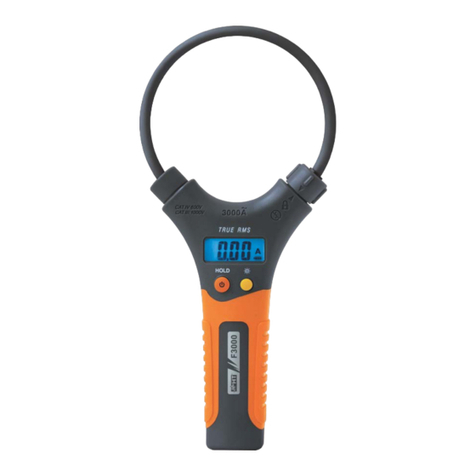
HT Instruments
HT Instruments F3000U User manual
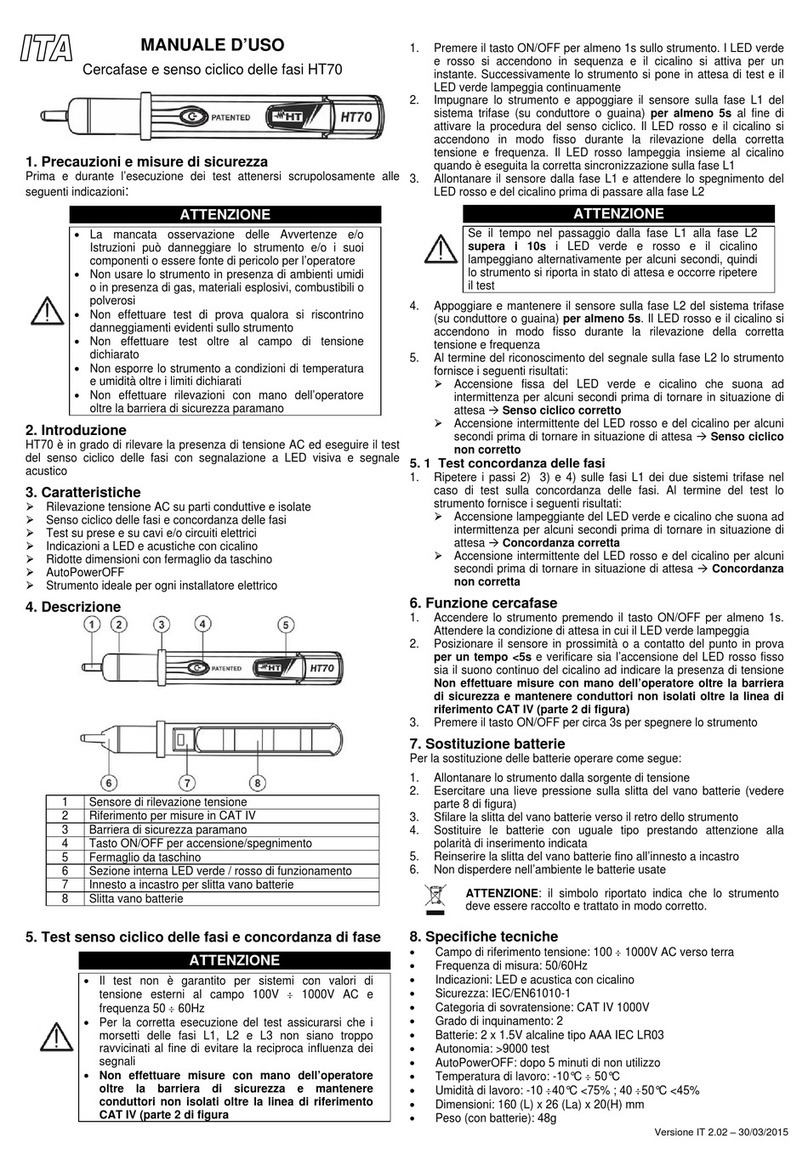
HT Instruments
HT Instruments HT70 User manual
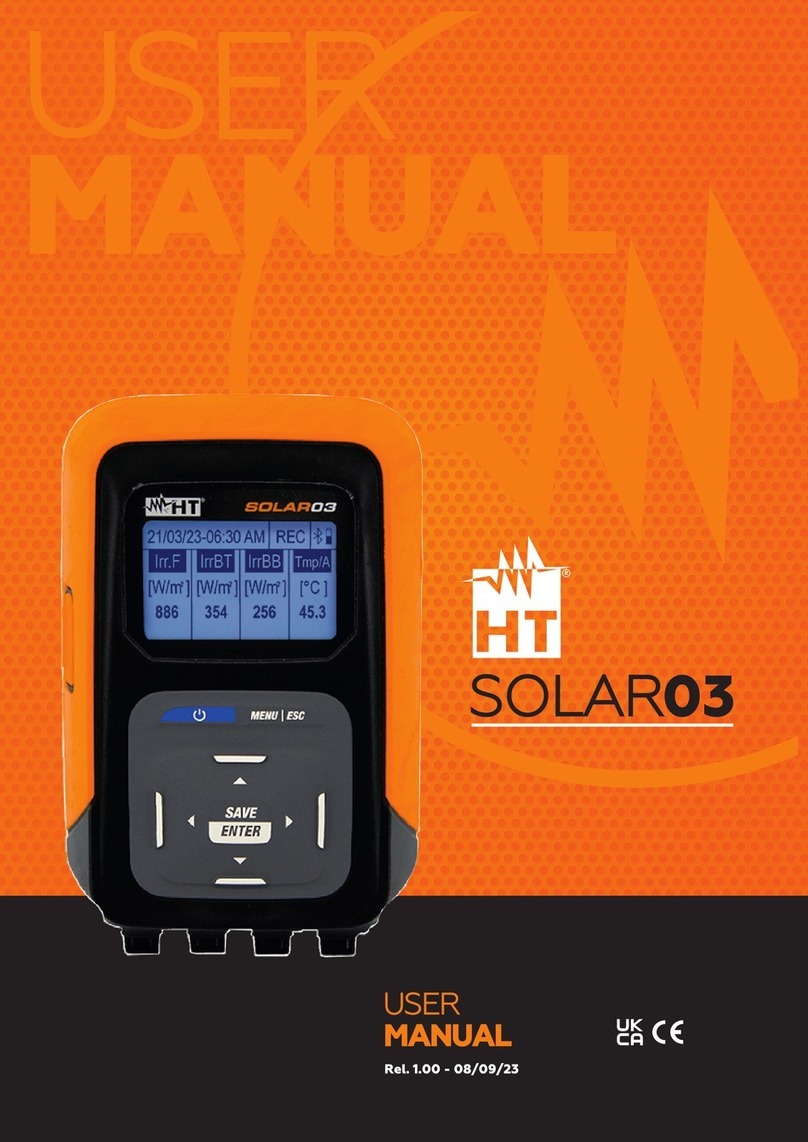
HT Instruments
HT Instruments SOLAR03 User manual
